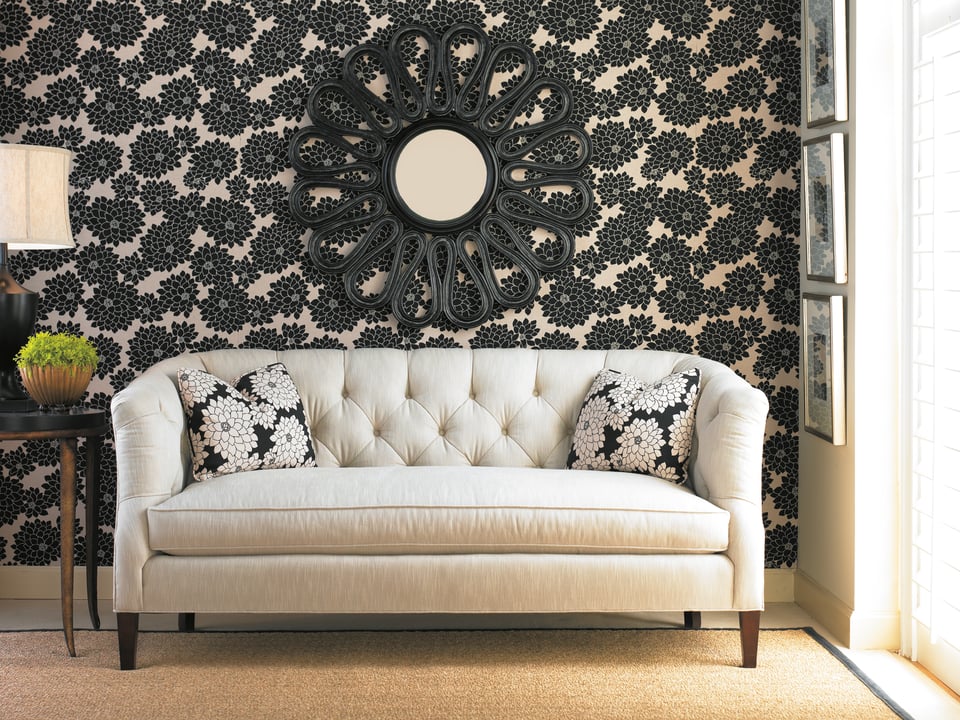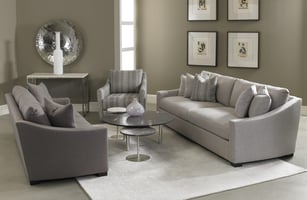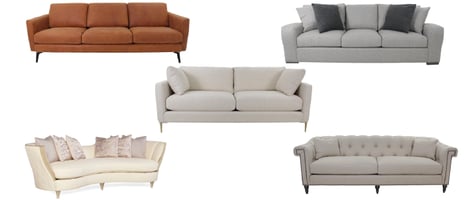If you’re on the taller side, it can be a struggle fitting into a world that, well, seems to cater...
8 Tips on Marrying 2 Different Design Styles – So You’re Both Happy!

You’ve developed your own style over the years, you know what looks good and what works for your lifestyle, but now someone else is coming into the fold. How are the two of you going to mix your styles together? Of course, you want your space to work and look good, but what good is that if the other person isn’t happy with the outcome?
Whether you’re moving in with a roommate, a partner, or a family member – there may be some tough conversations coming as you both try and merge your design styles, especially if one’s “a little bit country” and the other’s “a little bit rock-and-roll.”
At McElheran’s Furniture + Design, we specialize in helping you find your own personal style and create beautiful spaces around it. Our in-house designers – Design Guides – have guided and supported many couples as they merge their unique styles. With over 60 years of combined design experience, our Design Guides can assist you in figuring out how to come to an agreement and provide a little mediation, if you need it, too.
In this article, our Design Guides will go over some tips on how to marry two different styles. It’s not necessarily the easiest thing to do, but taking both styles into account will ensure that everyone is happy and comfortable with the end result.
8 tips on merging two home design styles
- Communication, communication, communication
- Give each other your own space
- Go neutral on main pieces of furniture
- Allow for both of you to have a win
- Respect each other’s opinions
- Find points of flexibility
- Concentrate on the feel rather than a look
- Look out for factors that are less personal
Communication, communication, communication
When you’re doing pretty much anything in life, especially when other people are involved, you must communicate. And communicate effectively!
With design, it’s no different. Your relationship should be open enough that both parties can comfortably voice their opinions and concerns without judgment. And you should check in on each other throughout the process too because, for some people, that ‘voice’ doesn’t always come right away.
We’ve often seen couples come into McElheran’s where one person is just there to “go with the flow.” But as they look at more products, sit through consultations, they may grow to have a stronger opinion on a few things. Suddenly the quiet one in the partnership has a lot to say and it’s important that they’re able to get involved.
A big thing about communication, too, is reading between the lines. Is that disagreement really over a coffee table, or are there some deeper issues at play? When this happens, it’s good to take a step back from your design project and get to the heart of the matter.
And once that’s solved, you can return to that coffee table conversation (hopefully) without any animosity.
Give each other your own space
This is why the ‘mancave’ gained so much popularity. In its inception, mancaves gave men a place to put their old “bachelor pad” style furniture in front of a big-screen TV complete with a nice bar fridge. It was usually in a separate part of the home, like a basement or garage, so the stereotypical gruff styling wouldn’t throw off the rest of the home's aesthetic.
The concept of the mancave is certainly evolving, though. Now, it’s more about the idea of everyone in the home needing their own sanctuary – and their own space to express themselves.
If you have the room, giving each person their own space allows them to do what they want with it, so they’ll be happy with the outcome. And from a project management standpoint, this is a great way to divide and conquer your design project.
Go neutral on main pieces of furniture
If both your tastes are rather eclectic, but also very different, going for a softer, neutral look on your bigger pieces is a great way to find some common ground.
And that doesn’t mean that you have to go all-beige-everything just to avoid an argument. There are other ways to express yourself!
Each of you can add your own personality and vibrancy with pillows, wallpaper, art, and other accessories.
Allow for both of you to have a win
One of our Design Guides, Shelley, had an experience with a husband and wife recently. The wife was the clear decision-maker, and the husband just sat back silently until they brought up one aspect of their living room plan – his chair.
The husband had one request: “Do whatever you want with the room, as long as I still get my chair.”
Perfect! The husband got his win, and his wife was totally fine with keeping the chair. Then, she and Shelley incorporated his chair into a new space that satisfied everyone.
Sometimes giving the other person those little wins here and there will allow them to compromise in other areas.
Respect each other’s opinions
It can be a little hard to appreciate the other person’s style when you know them…almost a little too well. You’ve seen their living spaces in the past and you aren’t quite sure if they have a knack for what looks good.
But it is important to allow the other person to express themselves, so they’ll return that respect – even if one of you embraces design a little more than the other.
Find points of flexibility
Teresa, another Design Guide, hit on this point a few times:
“There is always a solution and common ground if you’re willing to see it and bend a little bit.”
The two of you have agreed to live together, right? Obviously, there’s some degree of compatibility there! And if you can focus on that and what brought you together, it can really make the design process more of a collaboration as opposed to an argument waiting to happen.
Communication factors into this, too. Knowing the other person’s likes, dislikes, priorities, and non-negotiables, will give you a better understanding of where you can bend to suit their needs.
You don’t have to give up everything or become a total pushover, either, but flexibility is key when you’re bringing two different styles together.
Concentrate on the feel rather than the look
Shelley cautions that it’s very easy to get wrapped up in a certain look. And when you do that, you’re more likely to dig your heels in to achieve the exact aesthetic that you’re after.
But if you’re more focused on how you want your space to feel, you may find a little more room for negotiation with your partner. So, concentrate more on comfort and how inviting you want your space to be.
Look out for factors that are less personal
Style is so subjective, and it may take some time working through your different tastes to come up with a final plan. Luckily, there are some more tangible features of furniture and design that could help you come to a clear decision a lot faster.
Budget
Here’s the thing, if you have extremely exquisite taste, but that’s just not in the budget, a more modest route is probably the way to go. You may not have to compromise on certain grandiose styles if your finances can make that decision for you.
Function
Style and function really go hand in hand. And if your approach to style is way too different from your housemate, perhaps solely focusing on the function is the way to go. Think about what you need from your furniture and how it will get used. That will instantly narrow down your selection.
If you have pets, for instance, some colours and fabrics may not be the best choice for you. So right there, you’re already on your way to whittling down your options without making it personal.
Longevity
If there’s a fun little kitschy item your partner wants that probably won’t stand the test of time, it might not be the worse thing to buy. You have to pick your battles, right?
And if it’s something that won’t be a part of your lives for very long, or somehow finds its way in the trash (KIDDING!) it’s just not worth the fight.
Will it help to get another person involved?
 PHOTO CREDIT: Mangostar/Adobe Stock
PHOTO CREDIT: Mangostar/Adobe Stock
Sometimes all you need is another person to temper expectations and lay out a process that works for the both of you. And when they have the expertise to pick out furniture and help with your design – even better! Check out Should I Consult with a Designer Before Buying New Furniture to see if that is the next best step for you.
And if it’s starting to look like you need some sort of a design mediator to help bring together your two styles, drop by for a visit with one of our Design Guides! If you’re in the Edmonton area, they can help get you started on creating a beautiful space that both of you will love.


-min-1.png?width=800&name=DesignButton(png)-min-1.png)
-min.png?height=200&name=COLETTE%20(1)-min.png)

